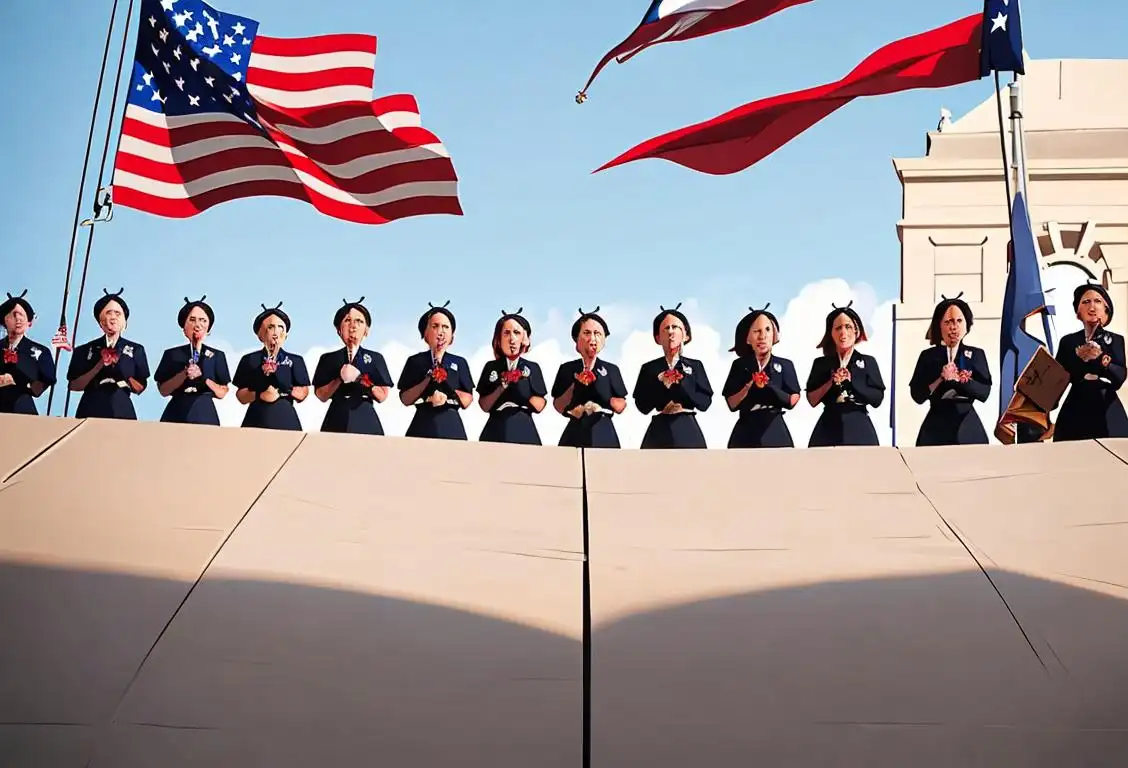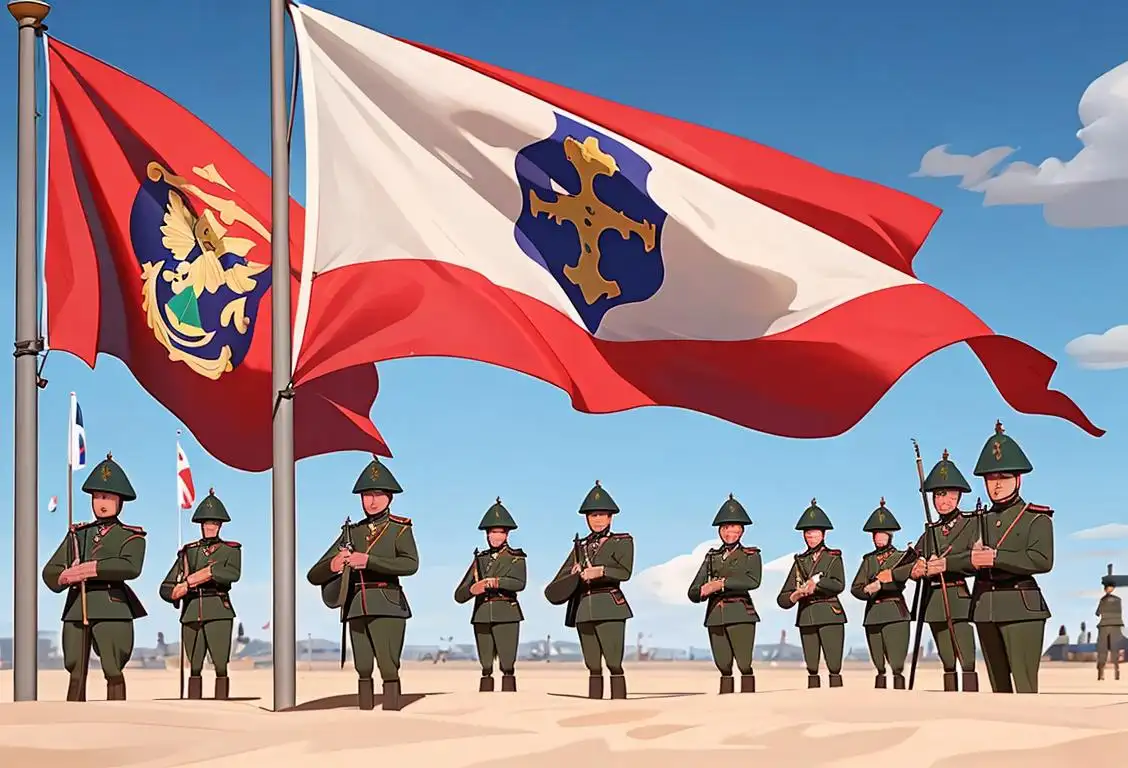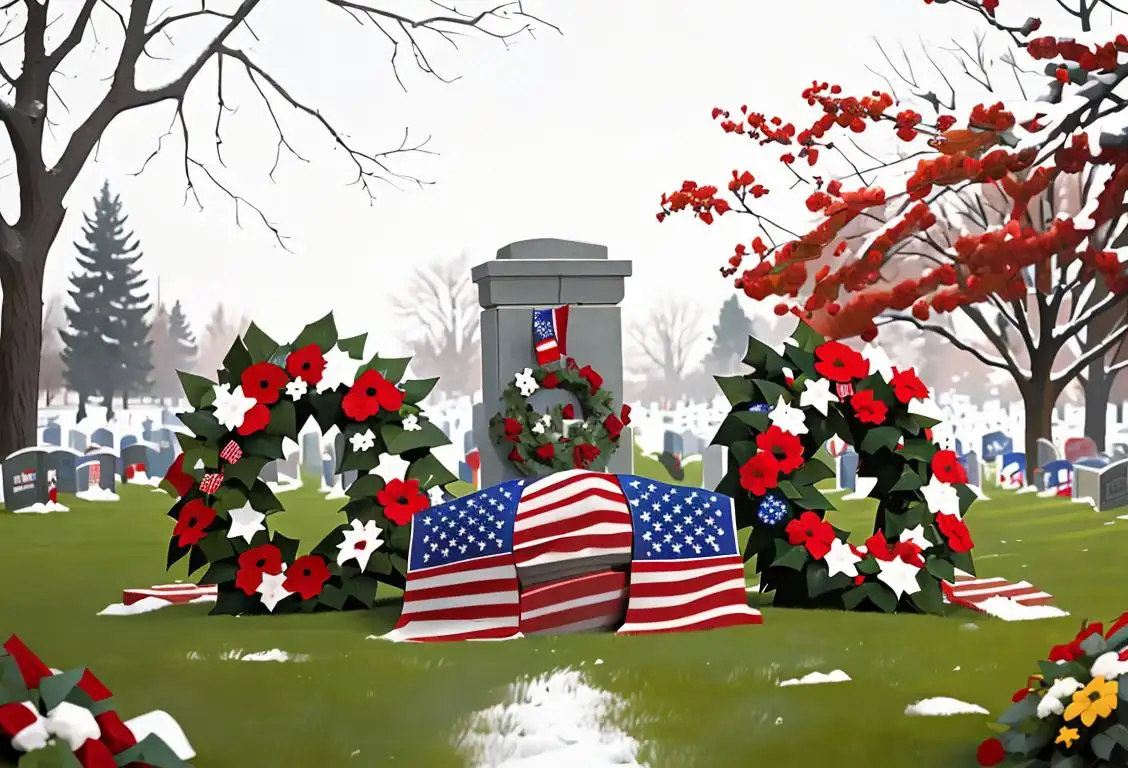National Pow And Mia Recognition Day

Welcome to the fascinating world of National POW and MIA Recognition Day! This special day allows us to honor and remember the brave men and women who have served in the armed forces and were either prisoners of war or missing in action. Let's delve into the history and significance of this day, while also uncovering a fun fact along the way!
When is Pow And Mia Recognition Day?
It's national pow and mia recognition day on the 15th September.
A Brief History of National POW and MIA Recognition Day
On this solemn day, we pay tribute to the individuals who have endured unimaginable hardships while serving our country. National POW and MIA Recognition Day is observed annually on the third Friday of September. It serves as a reminder of the sacrifices made by those who fought to protect our freedoms.
The origins of this day can be traced back to the end of the Vietnam War. In 1979, a group of wives and family members of prisoners of war organized a protest rally, demanding the U.S. government's accountability in locating and returning their loved ones. Their efforts caught the attention of Congress, and led to the passage of a resolution designating the third Friday in September as National POW/MIA Recognition Day.
Since then, this day has been marked by various ceremonies, observances, and activities to honor those who have gone missing or suffered captivity while serving their country. It serves as a powerful reminder of the ongoing commitment to bring closure to the families of missing service members and to never forget the sacrifices made for our nation.
Remembering Our Heroes
On National POW and MIA Recognition Day, communities come together to express gratitude and support for those who have been prisoners of war or are still missing. Loved ones, veterans, and patriotic citizens join in commemorative events, flag ceremonies, and candlelight vigils.
These events seek to raise awareness about the POW/MIA issue and advocate for the continued efforts to locate, identify, and bring home the remains of missing service members. They also serve as a source of comfort for families who have yet to find closure and answers regarding the fate of their loved ones.
It's important to remember that National POW and MIA Recognition Day is not only a tribute to the past, but also a call to action for the present and future. By honoring these courageous individuals, we renew our commitment to never rest until every missing service member is accounted for and every family finds solace.
History behind the term 'Pow And Mia Recognition'
1970
The POW/MIA Issue Comes to Attention
The term 'POW and MIA recognition' originates from the Vietnam War era in the United States. As the war escalated, an alarming number of American soldiers were reported missing in action (MIA) or taken as prisoners of war (POW) by the North Vietnamese Army. The families of these missing and captured soldiers began demanding more awareness and government action to address the issue.
1971
National League of Families Forms
In 1971, the National League of Families of American Prisoners and Missing in Southeast Asia was established. This organization aimed to advocate for the rights and support of POWs and MIAs, as well as to raise public awareness about their plight. The formation of this group played a significant role in popularizing the term 'POW and MIA recognition,' as it became an integral part of their mission.
1974
First Public POW/MIA Recognition Campaign
The year 1974 marked a significant milestone in the history of 'POW and MIA recognition.' The National League of Families launched the first nationwide POW/MIA Recognition Campaign, urging the American public to honor and remember the sacrifices made by the missing and captured soldiers during the Vietnam War. This campaign helped raise public consciousness about the issue and placed pressure on the government to take action.
1989
POW/MIA Recognition Day Established
In 1989, the United States Congress officially designated the third Friday of September as National POW/MIA Recognition Day. This annual observance aims to honor the service and sacrifice of prisoners of war and those still missing in action. It serves as a reminder to the nation of the ongoing unresolved issues surrounding POWs and MIAs and the need for continued awareness and effort to bring them home.
1995
National POW/MIA Flag Displayed Permanently
In 1995, the National POW/MIA Flag, a distinct symbol of the POW/MIA recognition efforts, was permanently displayed in the United States Capitol Rotunda. This flag features a silhouette of a man beneath a guard tower, enclosed in a white circle, and is a powerful symbol of the commitment to never forget the service members who remain missing or captive. The perpetual display of this flag further reinforced the significance of 'POW and MIA recognition' in American culture.
Did you know?
Did you know that the Defense POW/MIA Accounting Agency conducts ongoing investigations and recovery efforts to bring home missing service members? Through their diligent work, they have been able to identify and return the remains of countless heroes to their families.Tagged
awareness loved ones remembranceFirst identified
17th April 2016Most mentioned on
15th September 2017Total mentions
44Other days
Defence Day
Awareness Day
Odp Day
Security Day
Rescue Dog Day
Suicide Prevention Month Day
Wreaths Across America Day
Medal Of Honor Day
Foundation Day
Cerebral Palsy Awareness Day









